The Future of Bitcoin as a DeFi Platform
Learn about how Bitcoin is becoming a DeFi platform and how emerging blockchain technologies that bring smart contracts and multichain interoperability are enabling this.

Bitcoin is now entering decentralized finance, being a longstanding leader in the digital asset space. With its core principles of decentralization, security, and stability, its role in this area may grow in significant ways. This article explores the intersection of Bitcoin and decentralized finance, the fundamental technologies driving this development, and provides insights into potential future directions.

A Quick Tour on DeFi
Ethereum is often considered the starting point for DeFi. As introduced in its 2013 Whitepaper; 'A Next-Generation Smart Contract and Decentralized Application Platform'.
Ethereum was the first smart contract–capable blockchain, which was exactly what DeFi needed.

DeFi refers to technologies, applications, and infrastructures that enable direct financial activities through smart contracts, eliminating the need for a central entity or intermediary.
A few years after Ethereum's introduction, a development period in DeFi took off. The years of 2017-2018 marked the period where major pioneering DeFi protocols like Aave, and Uniswap among others, saw their surge on the one and only dominant blockchain named Ethereum.
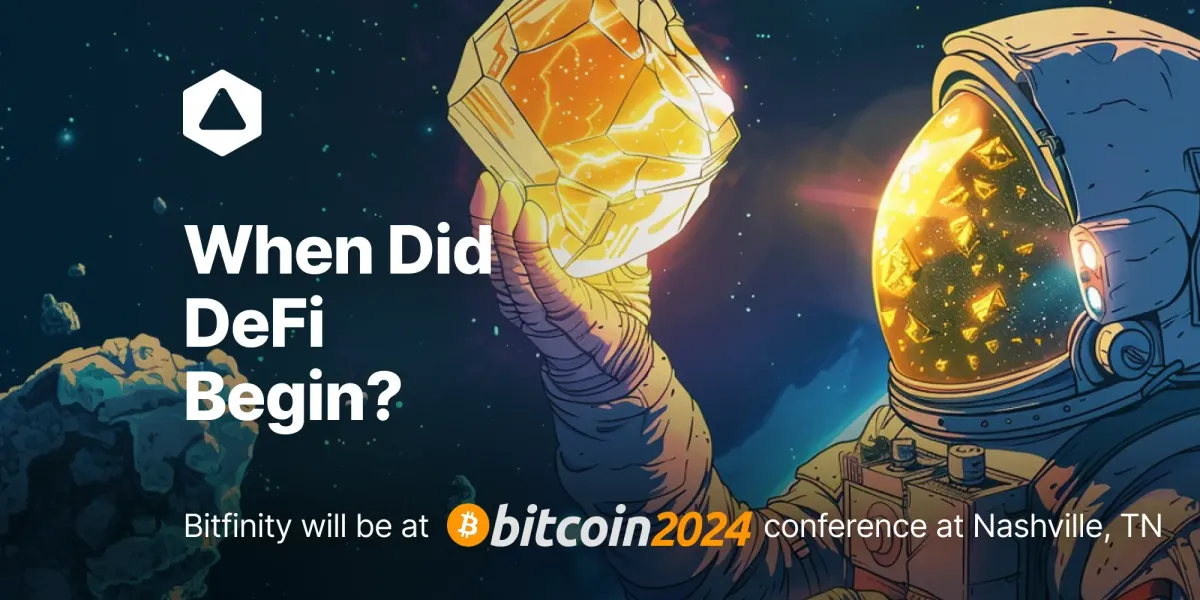
But as this happened, the biggest and first blockchain lurked in the shadows...
The Rise of Bitcoin as a DeFi Platform
When Satoshi Nakamoto built Bitcoin, he did it with simplicity in mind, prioritizing security and decentralization over programmability. This restricted its capabilities in scripting and smart contract capabilities, which explains why Bitcoin wasn't simply ready during the early days of DeFi.
Although its base layer was not built for complex smart contracts, the notion of a life without DeFi on Bitcoin was something developers were not ready to live with. As early as 2018 and 2019, the first solutions aimed at enabling Bitcoin-based DeFi, a.k.a BTCFi, began to come up. These solutions were mostly based on upgrades and advanced layers built on top of it.
The Taproot Upgrade
The Taproot upgrade was activated in November 2021, as a Bitcoin softfork. It introduced Schnorr signatures, which consolidate multiple signatures into one, working the same way as adding numbers, 2+3=5. Schnorr signatures can add multiple signatures together to make one signature, and it still proves all the original signers approved. This helps facilitate privacy and efficiency.
Additionally, through the concept of Merkelized Abstract Syntax Tree (MAST), Taproot supports more advanced smart contracts, enabling Bitcoin’s scripting language to support complex DeFi applications such as token creation and decentralized exchanges.
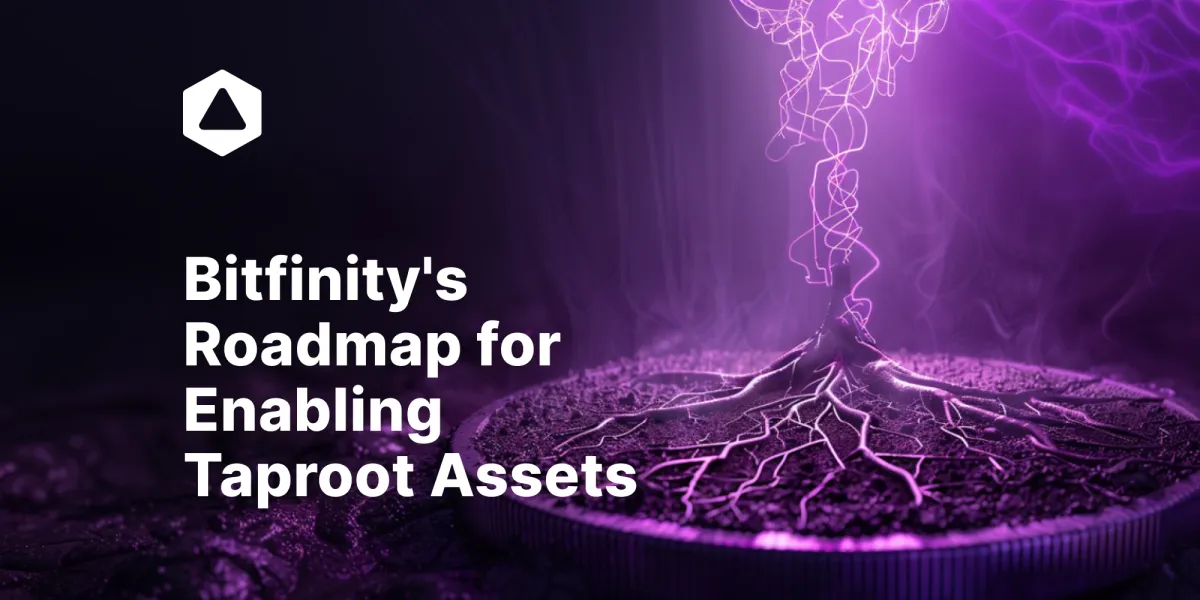
“[MAST] can help make smart contracts more efficient and private by only revealing the relevant parts of the contract when spending” - taproot.watch.
Bitcoin Virtual Machine (BitVM)
Bitcoin Virtual Machine is a computational engine that facilitates smart contracts-like functionality on Bitcoin. The protocol was introduced in 2023 through a whitepaper titled “BitVM: Compute Anything on Bitcoin” by Robin Linus.
"Any computable function can be verified on Bitcoin"https://t.co/Itf9UHos0C pic.twitter.com/CLQv49Ydsg
— яobin linus (@robin_linus) October 9, 2023
One of its essential features is the 'Turing completeness'. As you perhaps know, a Turing-complete system can theoretically execute any computational problem.
The Taproot upgrade makes BitVM's functionality possible by combining 'fraud proofs' and a 'challenge-response' model to process and validate transactions between two parties: a prover and a verifier.
A "prover" makes claims and a “verifier” can perform a fraud-proof to punish them when false claims are made. From this, BitVM broadens Bitcoin operations to host interesting applications as noted by its developer.
“Potential applications include games like Chess, Go, or Poker, and particularly, verification of validity proofs in Bitcoin contracts,” - Linus.
Bitcoin Layers
Developers realized that one way to bring smart contracts and other DeFi capabilities to Bitcoin was through building protocols that run off the main base layer and only utilize its security for the final settlements. These protocols are what we are referring to as ‘Layers’ or Layer 2 (L2) solutions.
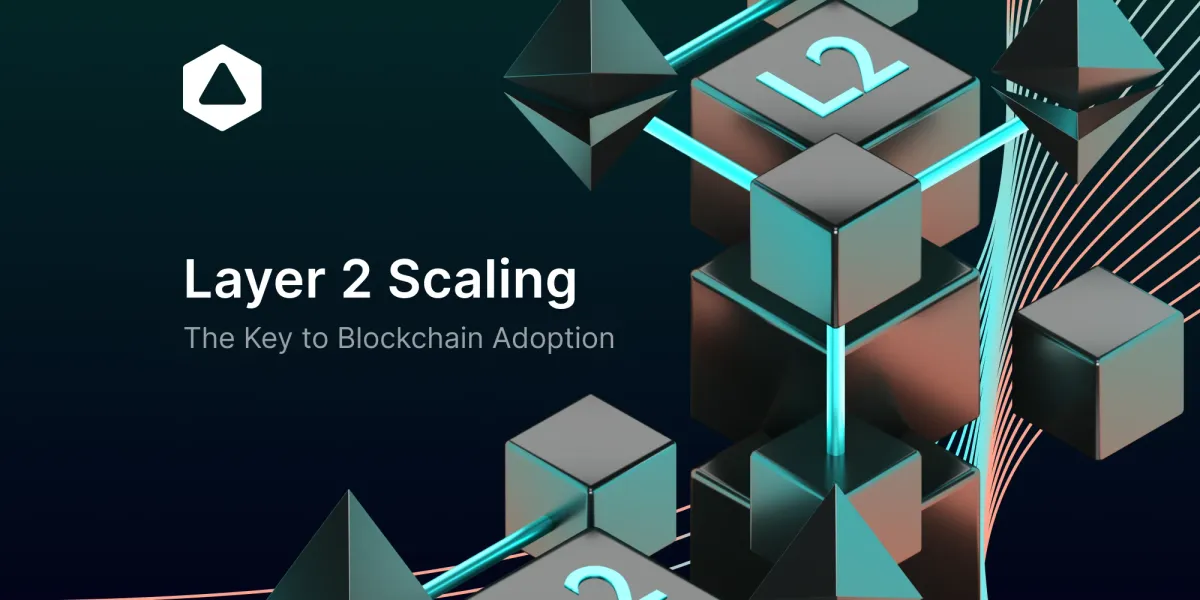
Over the years several layers have been developed each with its unique way of interacting with Bitcoin's base and facilitating DeFi. The main ones include;
Lightning Network
Lightning Network (LN) was introduced in a paper in 2016 where payment channels were proposed to process micropayments off-chain. Its mainnet was later launched in 2018 by Lightning Labs.
To use its payment channel two users are required to first fund a particular amount of BTC on the underlying Bitcoin blockchain. Using smart contracts, the Lightning Network establishes a one-on-one payment channel between the users, allowing them to transact off-chain as much as they want.
Liquid Network
Liquid Network is another Layer 2 developed by Blockstream in 2018. It acts as a sidechain connected to the Bitcoin network through a two-way peg system that allows users to move funds between the two networks.
To use its services, users send a certain amount of BTC to Liquid client software and in return receive an equivalent amount of its native token Liquid Bitcoin (L-BTC) which exposes them to an array of DeFi use cases, such as; asset swaps and issuance of stablecoins.
Rootstock
Rootstock (RSK) is the first ever Ethereum Virtual Machine (EVM)- compatible Bitcoin sidechain that enables developers to write and deploy smart contracts using Ethereum’s Solidity language.
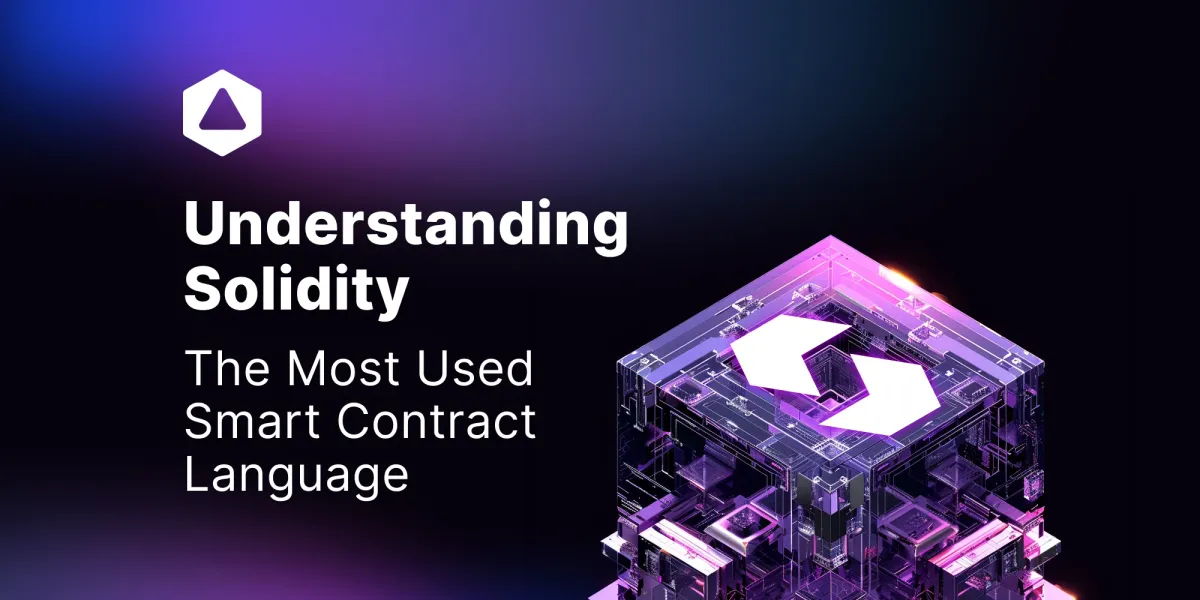
Through a process known as 'merged mining,' RSK utilizes Bitcoin's Proof-of-Work consensus mechanism to allow miners to mine blocks at the same time on the two networks.
To connect to Bitcoin, RSK has established a two-way peg that allows users to convert BTC to its native asset smartBTC (RBTC), and vice versa.
Stacks
Stacks profiles itself as a smart contract layer on Bitcoin that allows the development of DeFi and decentralized applications.
The layer also has a two-way-peg token sBTC, which is backed by Bitcoin in a 1:1 ratio to facilitate asset swaps between its network and the Bitcoin base layer.

Additionally, the Stacks consensus model known as Proof-of-Transfer (PoX) connects to Bitcoin and allows miners to transfer BTC to mine STX (the network’s native token) and ensures that all its blocks are settled on the Bitcoin base layer.
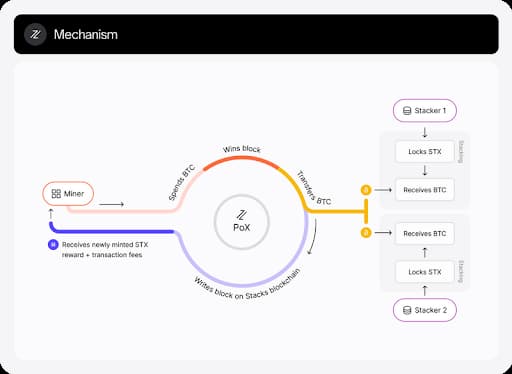
This is how Stacks brought DeFi to Bitcoin in its own way, with several use cases such as asset management, lending, and decentralized exchanges among others as we will see later.
Bitcoin DeFi Use Cases
From the above solutions, Bitcoin DeFi means an entirely new range of use cases within the Bitcoin network;
Asset issuance
Bitcoin DeFi facilitates the issuance of both fungible and non-fungible assets on the Bitcoin network.
Through BTCFi, fungible assets like Runes, Taproot Assets, and BRC-20 tokens can now be easily issued and transferred on the Bitcoin blockchain.
On the other hand, non-fungible tokens (NFTs) have been made possible through the Ordinal protocol introduced in 2023. Ordinals allow the inscription of data such as images and texts into a uniquely identifiable satoshi—the smallest unit of a Bitcoin—to create Bitcoin-based digital artifacts.
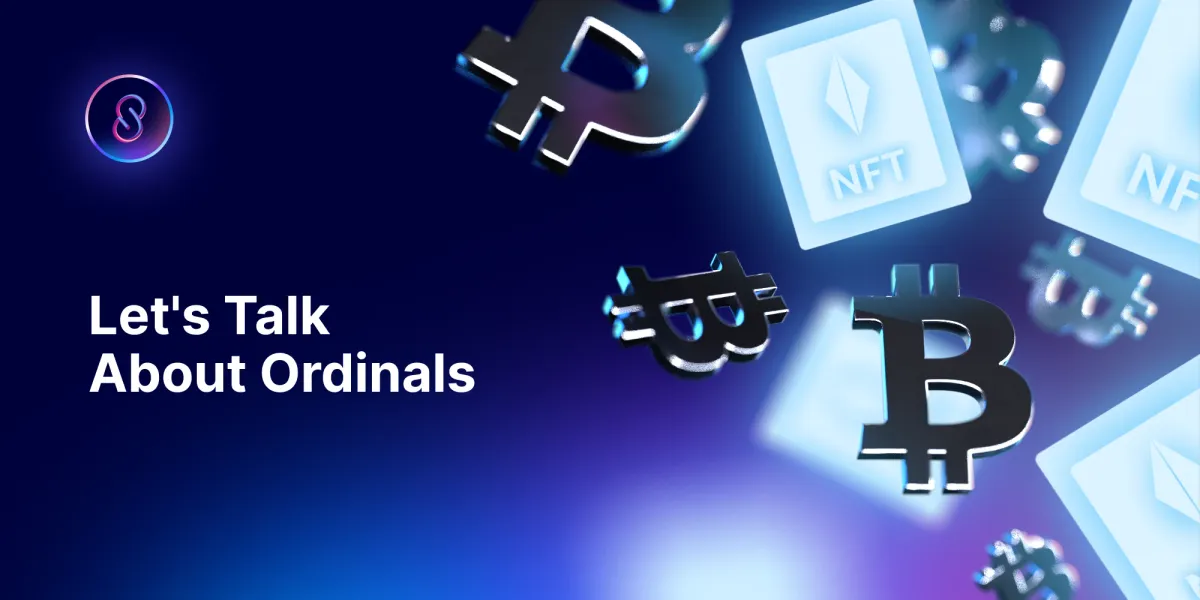
Tokenized Bitcoins also present another approach to Bitcoin's DeFi assets issuance. This involves the creation of wrapped Bitcoins through the ‘token wrapping mechanism’ to bridge Bitcoin with the wider DeFi ecosystem. Several wrapped Bitcoins such as ckBTC, WBTC, and tBTC are some of the evident use cases.
Decentralized Exchanges
Decentralized exchanges on Bitcoin are typically built on Layer 2 solutions. They enable direct trade of Bitcoin-based assets among users, peer-to-peer asset swaps, and provide liquidity to the market.
Lending and Borrowing
Through the capabilities of smart contracts brought by Bitcoin layers, automated lending and borrowing processes are a use case on Bitcoin.
For lending, users crypto assets in decentralized money markets and receive passive income in the form of yields. Borrowing on the other hand involves acquiring crypto loans mostly used for trading or arbitrage purposes.
The above use cases are just but to mention a few possibilities users have enjoyed as a result of DeFi coming to Bitcoin. Therefore, it’s about time we prepare for its future as a leader in the DeFi space.

The Future of Bitcoin as a DeFi Platform
When innovations come to Bitcoin, they do it massively. For instance, when NFTs were brought for the first time on the network via Ordinals, the market grew from less than $100 million to over $1.5 billion in less than six months.
DeFi isn’t an exception to this; a similar trend has emerged since builders have realized the feasibility and reliability of building around Bitcoin.
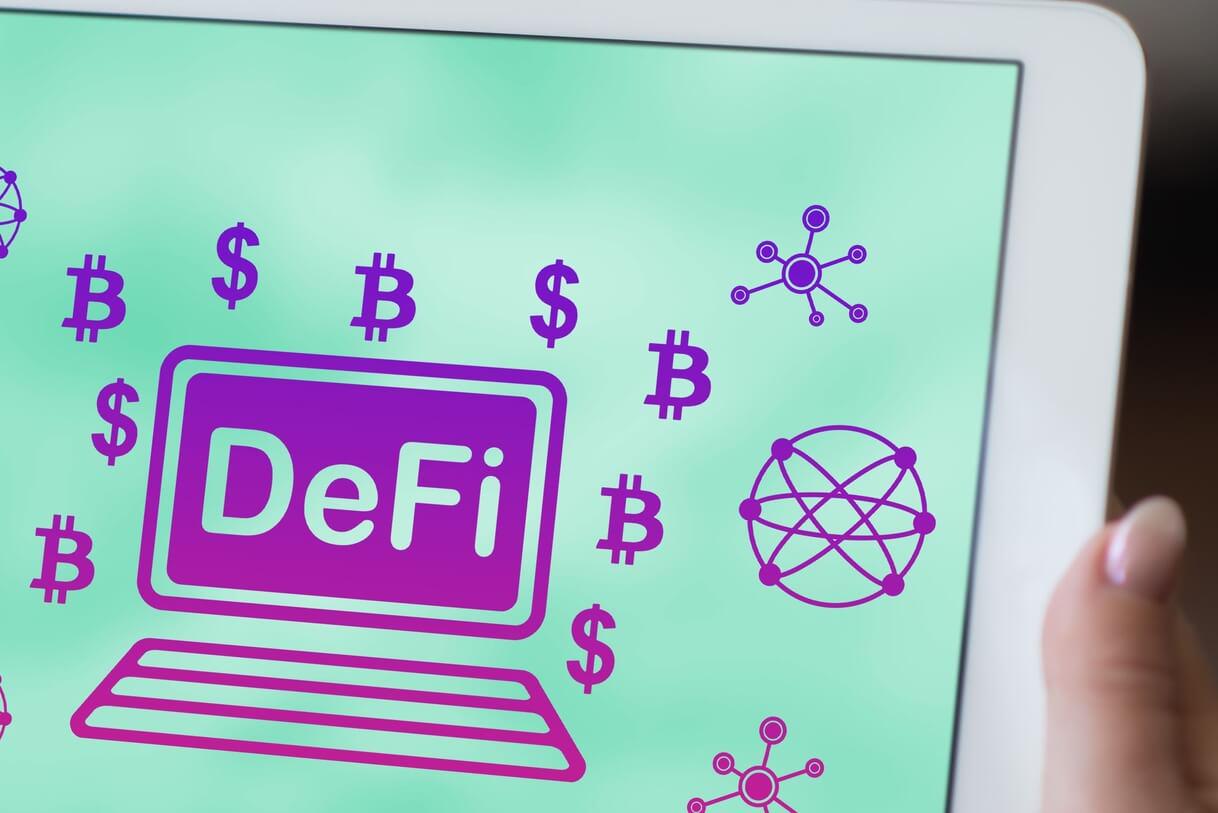
In 2023 alone, 40% of Bitcoin open-source developers were focused on advancing Bitcoin L2s and scaling solutions to facilitate DeFi. Fast forward to 2024, Bitcoin DeFi ecosystem total value locked (TVL) took a significant growth from as low as $304 million to over $2 billion.

This isn’t just a step forward—it’s a giant leap that proves Bitcoin’s growing dominance within DeFi and one expected to continue.

Therefore, the question isn't "how will Bitcoin enforce DeFi?"; it is more "When and...
What Will It Take for Bitcoin to Lead in DeFi?
For Bitcoin to become a leader in the DeFi space, several key developments need to occur;
- Maturing of Layer 2 solutions: Layer 2 solutions must evolve to support more complex DeFi applications than the ones already there. The scaling solutions provided by these technologies are crucial for making Bitcoin competitive with faster and more flexible blockchains like Ethereum.
- Cross-Chain interoperability: For Bitcoin to truly thrive in the DeFi space, it must become more interoperable with other blockchains than it already is. This will involve more cross-chain bridges, tokenized assets, and atomic swap capabilities for a wider interaction with other DeFi ecosystems.
- Development of better smart contract functionalities: While Taproot and Bitcoin layers are steps in the right direction, Bitcoin needs more advanced smart contract capabilities to unlock the full potential of DeFi. This includes contracts that can execute complex financial instruments on the Bitcoin blockchain and above all maintain good user interfaces.
- Regulatory Clarity: Bitcoin’s potential as a DeFi leader highly depends on regulatory clarity. If Bitcoin-based DeFi platforms can operate within regulatory frameworks while maintaining decentralization, they could appeal to more institutional investors and users who prioritize security and compliance.
Here Comes the Bitfinity EVM
Bitfinity is building an EVM-compatible solution that leverages the Internet Computer's Chain Fusion technology for direct, trustless blockchain interoperability.

Unlike rollups, Bitfinity's EVM doesn't require bundling transactions off-chain. Bitfinity unifies the Bitcoin and Ethereum ecosystems through a bridge that facilitates utility for existing Ethereum-oriented DApps. The Bitfinity EVM integrates directly with the Bitcoin network, allowing for asset bridging and enabling developers to deploy Bitcoin-based Solidity smart contracts.
While Bitfinity shows promise, it is compliant with regulations in all aspects, which is essential for Bitcoin-based DeFi platforms to attract institutional investors and users who prioritize security and compliance. It's time to get brewing on the Bitcoin blockchain.
Mainnet and TGE on 19th November.

Connect with Bitfinity Network
Bitfinity Wallet | Bitfinity Network | Twitter | Telegram | Discord | Github

*Important Disclaimer: The information provided on this website is for general informational purposes only and should not be considered financial or investment advice. While we strive for accuracy, Bitfinity makes no representations or warranties regarding the completeness, accuracy, or reliability of the content and is not responsible for any errors or omissions, or for any outcomes resulting from the use of this information. The content may include opinions and forward-looking statements that involve risks and uncertainties, and any reliance on this information is at your own risk.
External links are provided for convenience, and we recommend verifying information before taking any action. Bitfinity is not liable for any direct or indirect losses or damages arising from the use of this information.







Comments ()